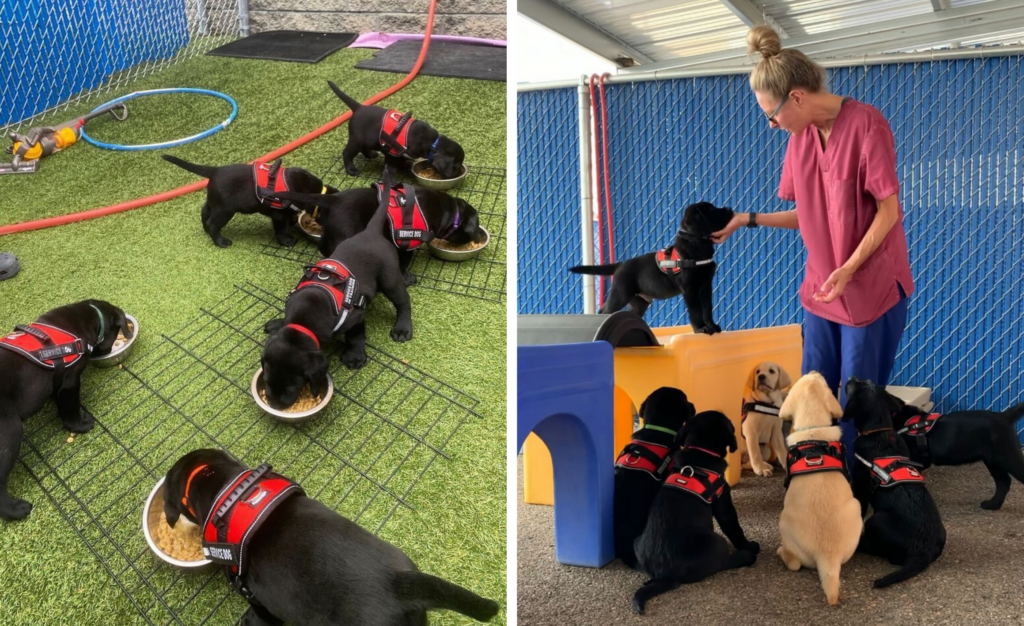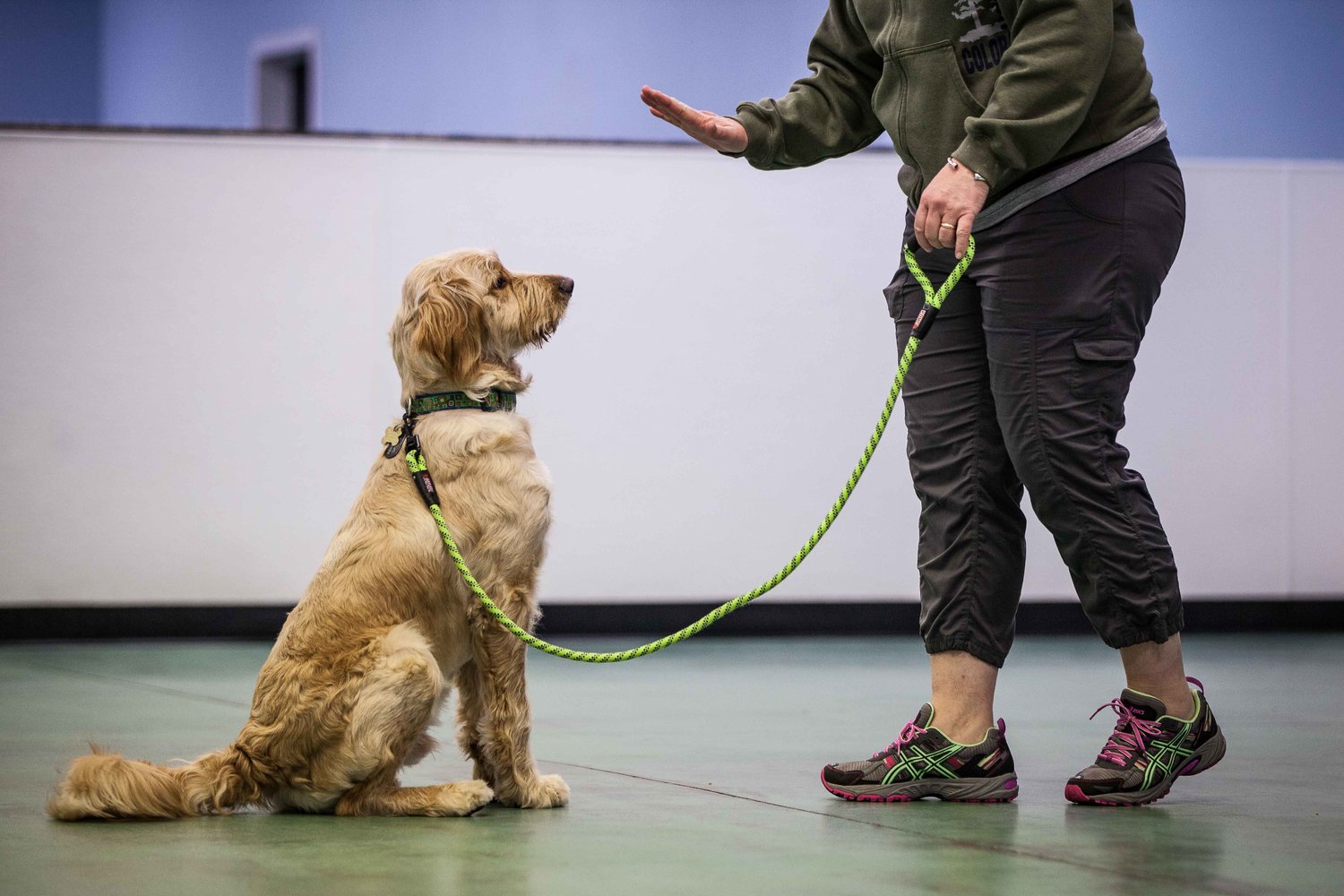Transform Your Canine's Behavior With Proven Training Approaches
Changing your pet dog's behavior calls for a nuanced understanding of their individual attributes and needs, as well as the application of tested training approaches. Consistency in your training strategy not only improves obedience yet likewise fosters a deeper bond of count on and respect in between you and your pet.
Understanding Pet Behavior
Understanding pet dog actions is vital for effective training and communication between human beings and their canine companions. Pets, as social pets, exhibit a variety of behaviors affected by genetics, setting, and experiences - Dog training. Acknowledging these behaviors helps proprietors tailor their training approaches to satisfy the particular requirements of their canines
Key aspects of pet habits consist of body language, vocalizations, and social communications. Additionally, socialization plays a critical function in shaping habits; canines that interact favorably with various other pets and different individuals are generally much more well-adjusted and versatile.
In addition, identifying stress signals-- such as avoidance, pacing, or panting habits-- can avoid escalation right into a lot more serious problems. Owners that are attuned to their dog's actions can produce a secure and caring atmosphere, fostering trust and enhancing the training process. Ultimately, a deep understanding of canine behavior lays the structure for a harmonious relationship and effective training results, making certain both dogs and their proprietors grow together.
Positive Support Strategies
Positive support techniques are commonly acknowledged as one of the most efficient approaches for training pet dogs, cultivating a positive learning setting. This approach includes gratifying desired habits with treats, praise, or play, thereby encouraging the canine to duplicate those behaviors. Unlike revengeful methods, favorable reinforcement constructs trust fund and strengthens the bond between the canine and the instructor.
Benefits should be provided immediately adhering to the desired actions to help the dog make the link. Consistency is likewise vital; using the exact same commands and rewards aids the canine comprehend what is expected.
It is essential to note that positive reinforcement is not about bribery; rather, it is about strengthening great actions. In time, as the canine discovers to link details activities with favorable results, the regularity of incentives can be progressively reduced, transitioning to verbal appreciation or intermittent benefits. This approach not only motivates obedience however additionally promotes a certain and delighted pet, making training a much more delightful experience for both events entailed.
Addressing Typical Problems
Addressing usual issues during dog training is vital for making sure a unified and successful partnership in between the pet and its owner. Lots of canine owners run into behavioral difficulties, such as excessive barking, jumping, and leash pulling. Comprehending the origin of these actions is vital for effective training.
To mitigate this, offer adequate physical workout, mental stimulation, and possibilities for social communication with both human beings and other pet dogs. Educating the dog to rest upon greeting can reroute this habits favorably.
Leash pulling is another widespread problem, often resulting from a pet's enthusiasm to discover. Utilizing appropriate chain dealing with methods, incorporated with training protocols that motivate loose-leash strolling, can substantially boost this actions.
In addition, issues like source protecting or splitting up anxiety require customized techniques. Progressive desensitization and counter-conditioning can be effective in addressing these challenges. By recognizing and proactively taking care of these common issues, canine owners can promote a more enjoyable training experience and enhance the bond with their canine companions.
Uniformity in Training

To accomplish consistency, it is essential that all members of the household abide by the very same training my company methods. For example, making use of the exact same verbal cues and hand signals guarantees that the canine obtains consistent messages. Furthermore, the timing of improvements and incentives ought to be regular; immediate support increases the chance that the pet dog will connect the habits with the end result.
Additionally, developing a regimen can even more improve uniformity. Routine session, paired with organized routines for feeding, walking, and playtime, assistance pet dogs prepare for and comprehend their environment, making them more responsive to training. Ultimately, consistency fosters a complacency and count on, encouraging pet dogs to discover more properly. By devoting to an organized strategy, instructors can advertise favorable habits adjustments and cultivate a courteous companion.
Building a Strong Bond
Exactly how can fostering a strong bond in between a pet dog and its proprietor boost the training experience? When a dog really feels safe and secure in its connection with its proprietor, it is more most likely to exhibit positive actions and be receptive to discovering.
Moreover, a solid bond assists in better communication. Pets are skilled at reviewing human hints, and a relying on additional info connection allows for clearer signals throughout training. Proprietors who invest time in structure this bond through play, socialization, and favorable reinforcement produce an environment where canines really feel excited and motivated to learn.
Furthermore, a well-established link can reduce anxiousness and behavioral concerns, as pets are less most likely to act out when they really feel recognized and looked after. As a result, prioritizing the growth of a Go Here solid bond not only boosts the training experience but likewise adds to a better and more well-adjusted dog. Eventually, the journey of training transforms into a collective collaboration, causing lasting behavior renovations.
Final Thought

Proprietors who are attuned to their dog's behavior can produce a caring and secure environment, fostering trust and enhancing the training procedure. Inevitably, a deep understanding of canine habits lays the structure for an unified relationship and reliable training results, making sure both pets and their owners flourish with each other.
Addressing common concerns during canine training is necessary for making sure a unified and successful connection in between the pet dog and its proprietor.Consistency is a keystone of reliable dog training, as it establishes a clear structure for the canine to comprehend behaviors and assumptions.In verdict, changing a dog's actions via confirmed training methods calls for an understanding of canine habits, the application of favorable reinforcement strategies, and a focus on consistency.